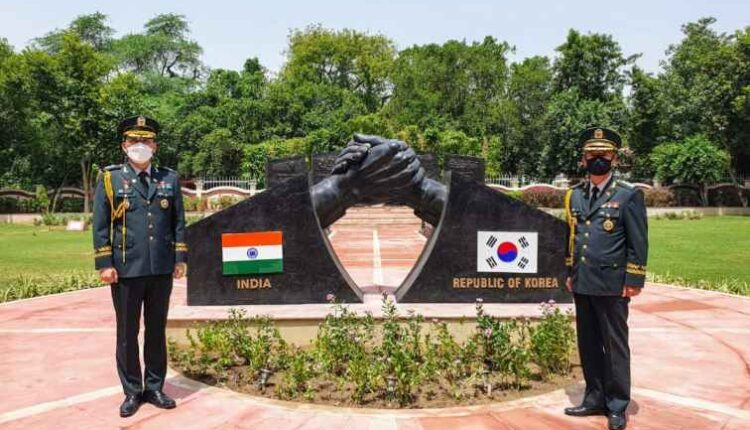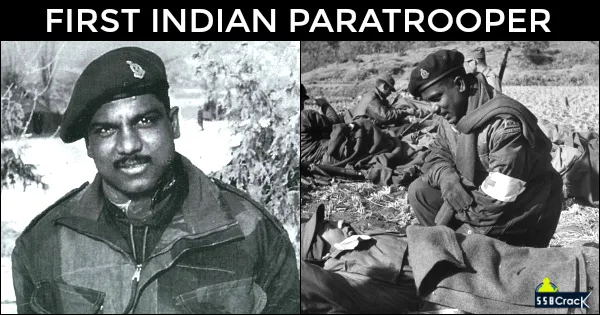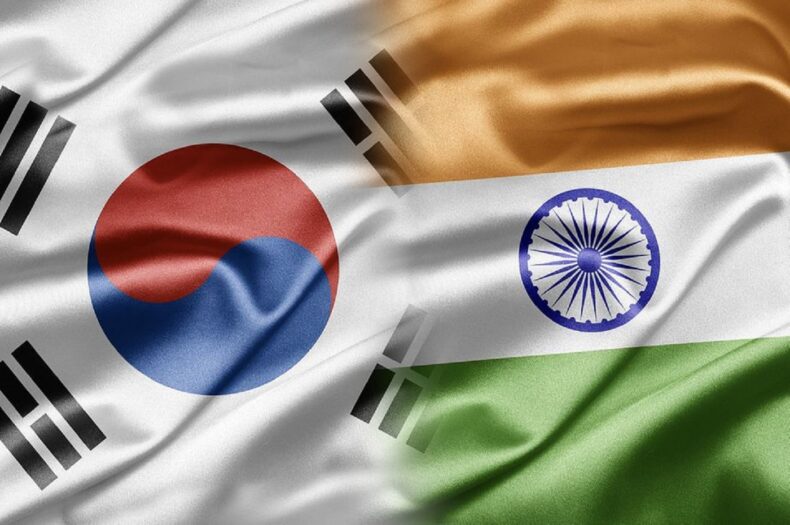Jawaharlal Nehru made a significant diplomatic effort to stop the conflict between the two Koreas at the beginning of the 1950s. India’s actions at the time had mixed results, and in this year of the G20, any role that Delhi would seek to play in the conflict between Russia and Ukraine is likely to be guided by its experience.

India has vowed to speak for the “Global South” in favor of peace during the G20. The Western coalition supporting Ukraine praised Prime Minister Narendra Modi for telling Russian President Vladimir Putin that “This is not the period of war.”
Some people have begun to hope that India, which frequently portrays itself as the “Vishwaguru,” may use its influence with Moscow and Kyiv to help put an end to the conflict. It has also revived interest in India’s sole previous diplomatic action, which occurred in a distant conflict seven decades ago and demonstrated both the country’s might and its limitations.
The Start of the War
Cold War foes were set against one another in the 1950 Korean War, and Prime Minister Jawaharlal Nehru made a significant diplomatic effort to stop the conflict from spiraling out of control and for the sides to quickly agree to a truce.
Just a small portion of the attempts was effective. Nonetheless, India is recognized as one of the nations that helped end the war. As chair of a commission to repatriate prisoners of war in the months following the truce, New Delhi also had a significant impact.

source:pbs
British historian Robert Barnes described the efforts of Nehru and his envoys to bring the war to a “swift conclusion,” prevent the UN from enacting a policy that might lead to its escalation, and reconcile the divergent positions of the two superpower blocs in an essay titled
“Between the Blocs: India, the United Nations, and Ending the Korean War,” published in The Journal of Korean Studies in 2013. India made a few fruitless attempts to mediate a truce. Yet, the July 1953 armistice deal, which is celebrating its 70th anniversary this year, was made possible by the 1952 recommendations for the exchange of prisoners.
North Korean armies invaded South Korea on June 25, 1950. At the 38th Parallel, the peninsula had been split after the close of World War II, with Soviet and American forces controlling the north and south, respectively. The occupying soldiers left Korea in 1948 after the two Koreas proclaimed their independence and had their elections. Both the North and the South, however, refused to acknowledge each other, and they still both claim the entirety of the Korean Peninsula as well as the islands on each side.
India at the UN

India held the rotating presidency of the Security Council that month and was one of the six non-permanent members at the time of the invasion. Three war endings materialized in fast succession. The US moved the first resolution on the day of the invasion, asking for the removal of North Korean forces from South Korean soil, despite the USSR’s boycott since the UN refused to replace Taiwan with the People’s Republic of China in the Security Council.
The US was happily surprised when New Delhi cast a favorable ballot. In Barnes’ account, Benegal Rau, the UN envoy for India, and the UK’s representative convinced the US to change the resolution’s wording so that it refers to the North’s conduct as a “breach of peace” rather than an “act of aggression.”
On June 27, the United States supported a second UN resolution that urged nations to give South Korea “such assistance as may be necessary” to stave off the invasion. Harry S. Truman declared that he would send the Seventh Fleet to the Taiwan Strait and provide support for the French in Indo-China.
After receiving a message from the British High Commissioner in India that there was “no place for neutrality when it came to aggressiveness,” Rau ultimately agreed to cast his vote, and Nehru eventually approved the motion.
On July 7, India voted against the third resolution, which handed American forces command over a coalition of foreign forces operating under UN auspices. India dispatched the 60th Parachute Field Ambulance, which conducted excellent work treating injured soldiers, so as not to appear to be avoiding an UN-issued call to duty. In Nehru’s opinion at the time, allowing China to join the Security Council may lead to a Korean conflict settlement.
At the end of August, the Soviets returned to the Security Council and vetoed more American resolutions, including one about sanctions against China.
The US moved the issue to the UN General Assembly as a result of the Soviet vetoes. Here, India was unable to stop a US-British vote that would have allowed UN soldiers to enter North Korea. Chinese armies joined the conflict when international troops crossed the 38th Parallel, and it appeared the crisis may get out of hand.
The UN supported Nehru’s request for a cease-fire and negotiations with the communist side in Korea and Taiwan following the end of hostilities. To develop recommendations for an EP ceasefire that were unanimously endorsed by the General Assembly, Rau was assigned to a three-member group.
Beijing, however, rejected the ideas, and in February 1951, the General Assembly supported a US resolution calling for sanctions on China with a clear majority. Nehru lost his temper after experiencing recurrent failure.
India and PoWs

Months later, in 1952, when the Panmunjom armistice negotiations broke down over the fate of the prisoners between the UN and the communist side (which included Chinese and North Korean officials), India became involved once more. Just 70,000 of the 170,000 captives held by the UN wished to be brought home, according to their tally, despite the negotiators’ insistence that no POW would be returned against his will. A total exchange was what the communists desired.
Nehru tasked the tenacious V. K. Krishna Menon with finding a solution to the deadlock. With the support of Britain and Canada, Menon suggested a commission of four members—two from each bloc—Sweden, Switzerland, Czechoslovakia, and Poland—plus a fifth nation to act as an umpire” and oversee the management of all POWs after the war. The fate of those who were willing to be repatriated would be decided over the following six months; those who were reluctant would be returned home immediately. The plan was approved by the UNGA, but it had to be dropped because of opposition from the Soviet Union and China.
Yet, when armistice talks picked back up in April 1953, the plan served as the cornerstone for the ultimate PoWs settlement. The same four nations were invited to join a committee for the repatriation of neutral nations. India was chosen to serve as the committee’s chair, and Nehru dispatched Lt. Gen. KS Thimayya and PN Haksar as his UN political advisors.
The committee would keep the POWs for 90 days, the Korean conference would discuss what would happen to those who couldn’t be repatriated for 30 days, and then the POWs would either be released or turned over to the UN General Assembly. Almost 22,000 prisoners of war who refused to return to their homes would be kept in custody by the Custodian Force India under the command of Maj Gen S S P Thorat. On July 27, 1953, the Armistice Agreement was formally signed.
President Volodymyr Zelenskyy’s invitation to President Xi Jinping to visit his nation has sparked suspicion that China, after facilitating the Saudi-Iran peace accord, may be gearing up for a more prominent peacemaking role as the world struggles to put an end to the conflict in Ukraine.
Luiz Inácio Lula da Silva, the president of Brazil, has stated that he wants to establish a “peace club” of nations, including China and India, who may cooperate to find a solution to the Ukrainian crisis. India’s experience trying to put an end to another war 70 years ago is likely to shape whatever role it may desire to play.













